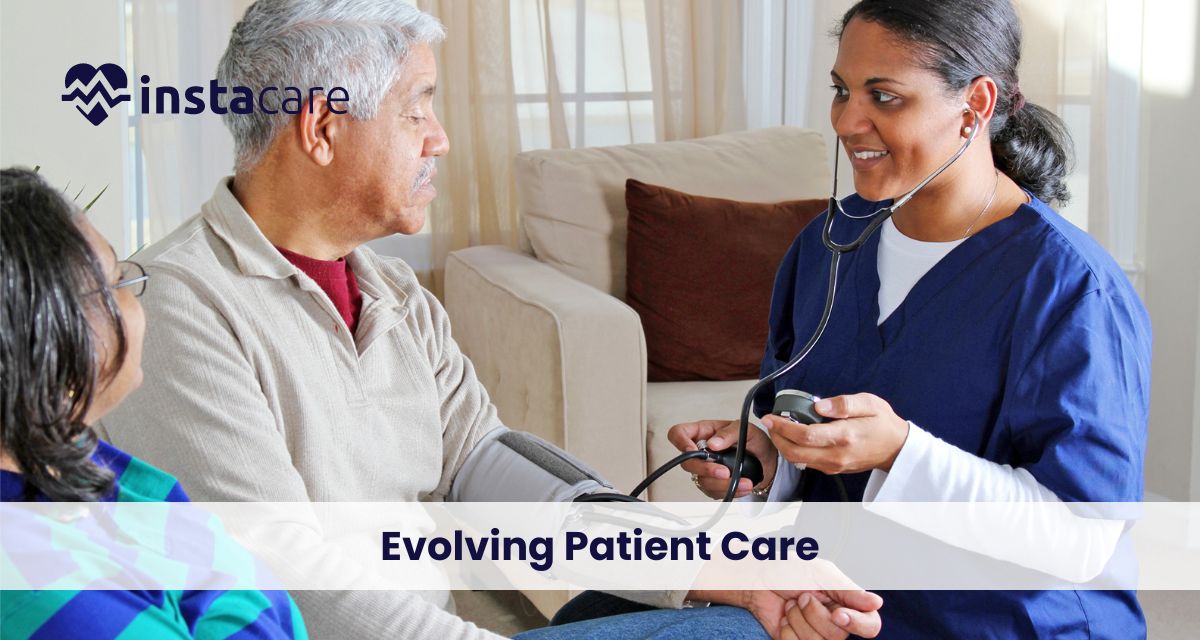Last updated on Monday, 22, July, 2024
In the changing atmosphere of health care, this shift toward person-centered care seals major overhauls in the various dimensions of care for patients. This only treats the people in general but does not focus on specific diseases or conditions. It is based upon respect, empathy, and primarily active participation of patients regarding their care. This blog is going to highlight the changeability of the patient care process, understanding of concepts, and the benefit of person-centered care. Further, it offers successful strategies on how to implement this within the healthcare setting.
Table of Contents
Shift to Person-Centered Care
By tradition, health care has been disease-centered, focusing on a diagnosis and treatment of the medical condition in opposition to the whole person. No doubt, this had great success in the progress of the science of medicine and tremendous treatment options. Most of the time, it has failed to be sensitive to the experiences and well-being of the patient. A model developed in response to this gap is person-centered, or patient care; more specifically, it lays emphasis on the values, preferences, and needs of a patient in bringing forth a more humane and efficient pattern of health care. At the same time, it is one of the building blocks of value-based care, generally focused on outcomes and satisfaction rather than volume.Core Principles of Person-Centered Care
- Respect and Dignity:
- Info and Communication:
- Participation:
- Collaboration:
Benefits of Person-Centered Care
- Improved Patient Satisfaction
- Improved Health Results
- Lowered Health Care Costs
- Higher Satisfaction of Providers
Strategies towards Implementing Person-Centered Care
Implementation of activities of person-centered care calls for changes at the strategic levels in health care. Some major strategies involved in the implementation of the same are:- Training and Education:
- Patient Involvement
- Technology and Innovation:
- Environment and Culture:
Future Directions in Person-Centered Care
While progress has been made, the journey to full actualization of person-centered care remains ongoing. Future directions toward that end include:- Customized Medicine:
- Artificial intelligence and machine learning
- Integrated Care Models:
- Empowerment:
- Policy and Advocacy:
Conclusion
Patient-centred approaches present a paradigm shift towards a more humane, effective, and sustainable health care system. This approach not only helps health care providers increase their level of patient satisfaction and health outcomes in a humane way but also help them find better fulfillment in their work through respect, empathy, and engaging the individual on the path to recovery. Wherein successful implementation of person-centered care will necessitate strategic changes at numerous fronts, such as training, patient involvement, interdisciplinary collaboration, and application of technology. Health is also evolving with regard to a myriad of other factors, so this commitment to person-centered care proves to be very critical in ensuring that the holistic needs of patients are taken care of with the promise of improved health outcomes for all.FAQs
1-What is person-centered care in healthcare?
Person-centered care, in a nutshell, is any treatment where the patient is handled as a whole, and not just the organ part of the anatomy being treated because it is sick or impaired. It includes respect, empathic concern, and active involvement of the patient in his or her treatment process, with a high regard for the patient’s values, preferences, and needs.2-What are some of the benefits for the patients and healthcare providers with regards to being person-centered?
It provides improved patient satisfaction, reduced costs, and better health outcomes for the patients and allows a fulfilling work environment, better patient relationships, and increased professional satisfaction for the practitioners.3-What are some of the important strategies for implementing person-centered care in health care settings?
Some of the strategies to do so include:- Training and Education: Continuing training in domains of communication and empathy.
- Patient Engagement: Engage patients in decision making through decision aids and the use of advisory boards.
4-What are Future Directions in Person-Centered Care?
Some of the future directions in person-centered care include:- Personalized Medicine: Personal characteristics-based treatment.
- AI and Machine Learning: Support better diagnostics and enable a recommendation for a course of treatment to be made.
- Models of Integrated Care: Integrated physical and mental health care



